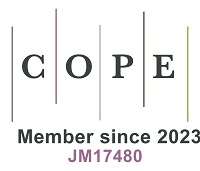REFERENCES
1. CONAB, Brazilian national company of provision. 2022. (In Portuguese). Available from: https://www.conab.gov.br/info-agro/safras/cana/boletim-da-safra-de-cana-de-acucar/item/download/43933_4c496920bffcfbfb45deb447d553a497 [Last accessed on 15 Feb 2023].
2. Aguiar A, Milessi TS, Mulinari DR, Lopes MS, da Costa SM, Candido RG. Sugarcane straw as a potential second generation feedstock for biorefinery and white biotechnology applications. Biomass Bioenergy 2021;144:105896.
3. Pachauri RK, Allen MR, Barros VR. Climate change 2014: synthesis report. Contribution of working groups i, ii and iii to the fifth assessment report of the intergovernmental panel on climate change. Geneva, Switzerland: IPCC, 2014. 32p.
4. Cherubin MR, Oliveira DMD, Feigl BJ, et al. Crop residue harvest for bioenergy production and its implications on soil functioning and plant growth: A review. Sci Agric 2018;75:255-72.
5. Carvalho JLN, Cerri CEP, Karlen DL. Sustainable sugarcane straw special issue: considerations for brazilian bioenergy production. Bioenergy Res 2019;12:746-8.
6. Cherubin MR, Lisboa IP, Silva AGB, et al. Sugarcane straw removal: implications to soil fertility and fertilizer demand in Brazil. Bioenergy Res 2019;12:888-900.
7. Lazaro LL, Giatti LL, Puppim de Oliveira JA. Water-energy-food nexus approach at the core of businesses - how businesses in the bioenergy sector in Brazil are responding to integrated challenges? J Clean Prod 2021;303:127102.
8. Klein BC, Chagas MF, Watanabe MDB, Bonomi A, Maciel Filho R. Low carbon biofuels and the New Brazilian National Biofuel Policy (RenovaBio): a case study for sugarcane mills and integrated sugarcane-microalgae biorefineries. Renew Sustain Energy Rev 2019;115:109365.
9. Carvalho JLN, Oliveira BG, Cantarella H, et al. Implications of regional N2O-N emission factors on sugarcane ethanol emissions and granted decarbonization certificates. Renew Sustain Energy Rev 2021;149:111423.
10. de Oliveira Bordonal R, Lal R, Alves Aguiar D, et al. Greenhouse gas balance from cultivation and direct land use change of recently established sugarcane (Saccharum officinarum) plantation in south-central Brazil. Renew Sustain Energy Rev 2015;52:547-56.
11. Cardoso TDF, Cavalett O, Chagas MF, et al. Technical and economic assessment of trash recovery in the sugarcane bioenergy production system. Sci Agric 2013;70:353-60.
12. Carvalho JLN, Nogueirol RC, Menandro LMS, et al. Agronomic and environmental implications of sugarcane straw removal: a major review. GCB Bioenergy 2017;9:1181-95.
13. Figueiredo EB, Panosso AR, Reicosky DC, La Scala N. Short-term CO2-C emissions from soil prior to sugarcane (Saccharum spp.) replanting in southern Brazil. GCB Bioenergy 2015;7:316-27.
14. Paula DT, Martins Filho MV, Farias VLD, Siqueira DS. Clay and phosphorus losses by erosion in oxisol with sugarcane residues. Eng Agríc 2016;36:1063-72.
15. Satiro LS, Cherubin MR, Safanelli JL, et al. Sugarcane straw removal effects on Ultisols and Oxisols in south-central Brazil. Geoderma Reg 2017;11:86-95.
16. Corradi MM, Panosso AR, Martins Filho MV, La Scala Junior N. Crop residues on short-term CO2 emissions in sugarcane production areas. Eng Agríc 2013;33:699-708.
17. Neto M, Galdos MV, Feigl BJ, Cerri CEP, Cerri CC. Direct N2O emission factors for synthetic N-fertilizer and organic residues applied on sugarcane for bioethanol production in Central-Southern Brazil. GCB Bioenergy 2016;8:269-80.
18. Figueiredo EB, La Scala N. Greenhouse gas balance due to the conversion of sugarcane areas from burned to green harvest in Brazil. Agric Ecosyst Environ 2011;141:77-85.
19. Rolim GDS, Camargo MBPD, Lania DG, Moraes JFLD. Classificação climática de Köppen e de Thornthwaite e sua aplicabilidade na determinação de zonas agroclimáticas para o estado de são Paulo. Bragantia 2007;66:711-20.
20. IPCC. The physical science basis. contribution of working group I to the fifth assessment report of the intergovernmental panel on climate change. Stocker TF, Qin D, Plattner GK, et al. (Ed.). Available from: https://www.ipcc.ch/report/ar5/wg1/ [Last accessed on 15 Feb 2023].
21. Raij BV, Quaggio JA, Cantarella H, et al. Análise química do solo para fins de fertilidade. Cargill F, editor; 1987, 170p. Available from: https://www.iac.sp.gov.br/produtoseservicos/analisedosolo/livro.php [Last accessed on 15 Feb 2023].
22. EMBRAPA, Centro nacional de pesquisa de solos. Manual de métodos de análise de solo. Brasília, Brazil: Ministério da Agricultura e do Abastecimento/EMBRAPA-CNPS; 1997. Available from: https://ainfo.cnptia.embrapa.br/digital/bitstream/item/169149/1/Manual-de-metodos-de-analise-de-solo-2-ed-1997.pdf [Last accessed on 15 Feb 2023].
23. Gonzaga LC, Zotelli LDC, de Castro SGQ, et al. Implications of sugarcane straw removal for soil greenhouse gas emissions in São Paulo State, Brazil. Bioenergy Res 2019;12:843-57.
24. IPCC. Chapter 2 generic methodologies. In: Guidelines for national green house gas inventories, prepared by the national greenhouse gas inventories programme. Eggleston LHS, Buendia K, Miwa T, et al. (Eds.). Japan: IGES; 2006.
25. Franco HCJ, Pimenta MTB, Carvalho JLN, et al. Assessment of sugarcane trash for agronomic and energy purposes in Brazil. Sci Agric 2013;70:305-12.
26. Oliveira DMS, Williams S, Cerri CEP, Paustian K. Predicting soil C changes over sugarcane expansion in Brazil using the DayCent model. GCB Bioenergy 2017;9:1436-46.
27. Gonzaga LC, Carvalho JLN, Oliveira BGD, Soares JR, Cantarella H. Crop residue removal and nitrification inhibitor application as strategies to mitigate N2O emissions in sugarcane fields. Biomass Bioenergy 2018;119:206-16.
28. Vasconcelos ALS, Cherubin MR, Feigl BJ, Cerri CE, Gmach MR, Siqueira-neto M. Greenhouse gas emission responses to sugarcane straw removal. Biomass Bioenergy 2018;113:15-21.
29. CETESB. Emissões veiculares no estado de são paulo. 2014. Available from: https://cetesb.sp.gov.br/veicular/wp-content/uploads/sites/6/2013/12/Relat%C3%B3rio-emiss%C3%B5es-veiculares-2014_VERS%C3%83O-DIGITAL_01.09.pdf [Last accessed on 15 Feb 2023].
30. Macedo IC, Seabra JE, Silva JE. Green house gases emissions in the production and use of ethanol from sugarcane in Brazil: The 2005/2006 averages and a prediction for 2020. Biomass Bioenergy 2008;32:582-95.
31. Dantas GA, Legey LF, Mazzone A. Energy from sugarcane bagasse in Brazil: An assessment of the productivity and cost of different technological routes. Renew Sustain Energy Rev 2013;21:356-64.
32. Leal MRL, Galdos MV, Scarpare FV, Seabra JE, Walter A, Oliveira CO. Sugarcane straw availability, quality, recovery and energy use: A literature review. Biomass Bioenergy 2013;53:11-9.
33. Carvalho DJ, Veiga JPS, Bizzo WA. Analysis of energy consumption in three systems for collecting sugarcane straw for use in power generation. Energy 2017;119:178-87.
34. Milanez AY. De promessa a realidade: como o etanol celulósico pode revolucionar a indústria da cana-de-açúcar: Uma avaliação do potencial competitivo e sugestões de política pública. BNDES; 2015. pp. 237-94.
35. Rosa LP, Ribeiro SK. Avoiding emissions of carbon dioxide through the use of fuels derived from sugar cane. Ambio 1998;27:465-70. Available from: http://www.jstor.org/stable/4314770 [Last accessed on 15 Feb 2023]
36. Harkiolakis N. In: Idowu SO, Capaldi N, Zu L, Gupta AD, editors. Encyclopedia of corporate social responsibility. Berlin: Springer; 2013. pp. 309-13.
37. MCTI. Emissões corporativas. ministério da ciência, tecnologia e inovação, Brazil; 2019. Available from: https://www.gov.br/mcti/pt-br/acompanhe-o-mcti/cgcl/clima/paginas/fator-medio-inventarios-corporativos [Last accessed on 15 Feb 2023].
38. Seabra JE, Tao L, Chum HL, Macedo IC. A techno-economic evaluation of the effects of centralized cellulosic ethanol and co-products refinery options with sugarcane mill clustering. Biomass Bioenergy 2010;34:1065-78.
39. Cavalett O, Chagas MF, Junqueira TL, Watanabe MD, Bonomi A. Environmental impacts of technology learning curve for cellulosic ethanol in Brazil. Ind Crops Prod 2017;106:31-9.
40. Vor T, Dyckmans J, Loftfield N, Beese F, Flessa H. Aeration effects on CO2, N2O, and CH4 emission and leachate composition of a forest soil. J Plant Nutr Soil Sci 2003;166:39-45.
41. Liska AJ, Yang H, Milner M, et al. Biofuels from crop residue can reduce soil carbon and increase CO2 emissions. Nat Clim Chang 2014;4:398-401.
42. Carmo JBD, Filoso S, Zotelli LC, et al. Infield greenhouse gas emissions from sugarcane soils in Brazil: effects from synthetic and organic fertilizer application and crop trash accumulation. GCB Bioenergy 2013;5:267-80.
43. Pitombo LM, Carmo JB, Hollander M, et al. Exploring soil microbial 16S rRNA sequence data to increase carbon yield and nitrogen efficiency of a bioenergy crop. GCB Bioenergy 2016;8:867-79.
44. Adler PR, Del Grosso SJ, Parton WJ. Life-cycle assessment of net greenhouse-gas flux for bioenergy cropping systems. Ecol Appl 2007;17:675-91.
45. Crutzen PJ, Mosier AR, Smith KA, Winiwarter W. N2O release from agro-biofuel production negates global warming reduction by replacing fossil fuels. Atmos Chem Phys 2008;8:389-95.
46. Firestone MK, Davidson EA. Microbiological basis of no and N2O production and consumption in soilsIn: Andreae MO, Schimel DS, editors, Exchange of trace gases between terrestrial ecosystems and the atmosphere. Chichester: John Wiley and Sons; 1989.








